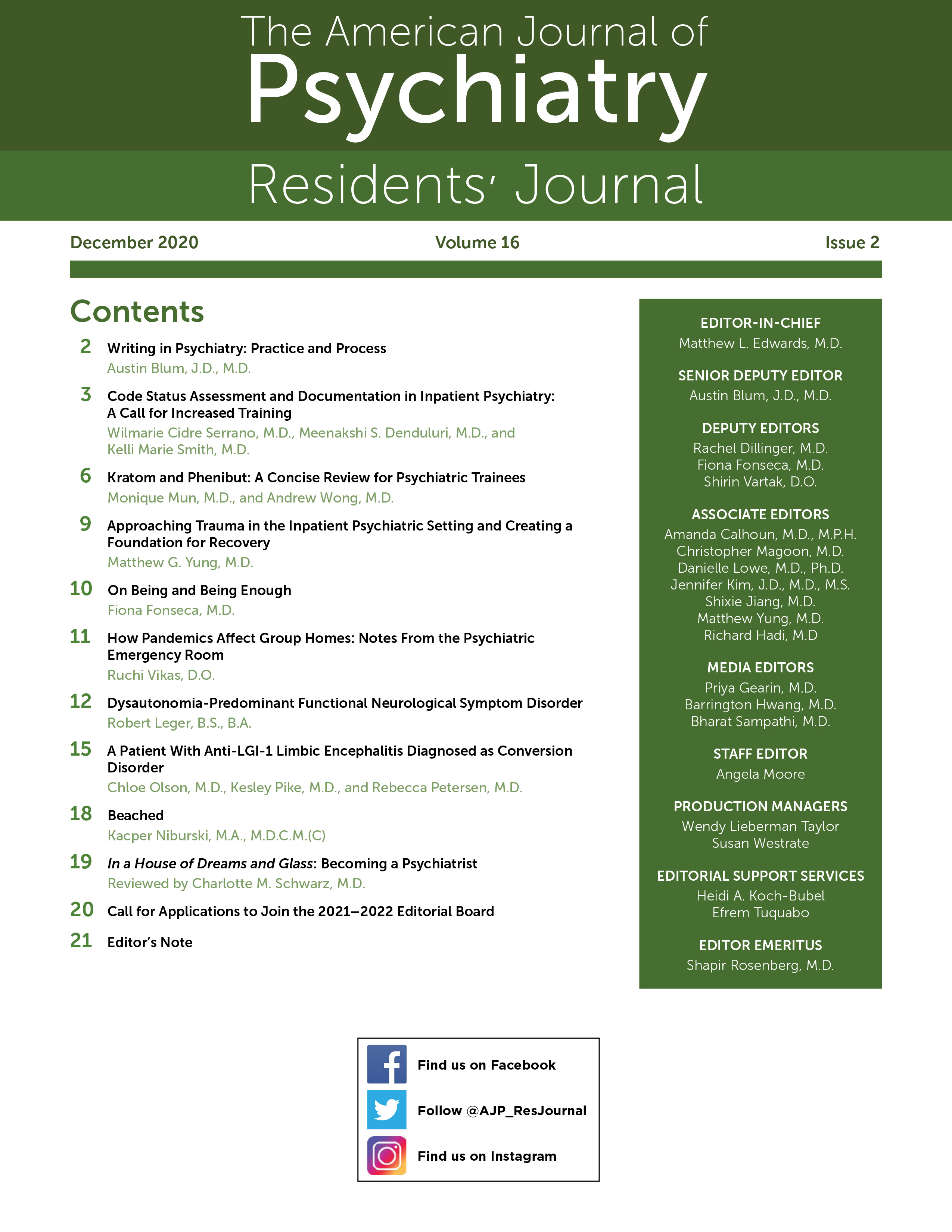Across from me was a young woman admitted to our inpatient psychiatric unit after a suicide attempt by intentional overdose. During my initial psychiatric interview, she shared with me the circumstances leading to her suicide attempt, including a break-up from a long-term relationship marked by escalating verbal abuse. She was also suffering from worsening nightmares and flashbacks from repeated sexual trauma experienced as a child. As I learned more, it became evident that addressing trauma would be a crucial part of her recovery, a realization that was not unique to this case. Yet how should we address trauma in an inpatient setting? Are the wounds of trauma responsive to treatment in an acute setting and, if so, by what mechanisms?
In
Trauma and Recovery, Judith Herman (
1) describes recovery in three stages: safety, remembrance and mourning, and reconnection. She broadly defines safety as a regulation of bodily functions, management of self-destructive behaviors, and a sense of control and predictability of one’s environment. She argues that establishing safety and building a therapeutic alliance are so foundational to recovery that further therapeutic work should not be attempted until a reliable degree of safety is achieved.
After reading Dr. Herman’s work, I tried to apply her principles to the care of my patient, particularly regarding safety. I began by focusing my attention on restoring sleep and offered medications that attenuated hyperarousal symptoms and nightmares. In the mornings during prerounds, I allocated more time for her and learned to better listen and be fully present. I paid closer attention to the content of her narrative, underlying themes and emotions, and body language. Occasionally when I greeted her in the mornings, she would tell me that she had had a difficult night and ask me to return later. One afternoon when I returned, she had a look of surprise and said, "I didn’t think you’d come back." Her response illuminated the mistrust and instability of prior dysfunctional relationships and her expectation of others. I recognized in that moment an opportunity to create a new and positive experience of consistent reliability.
As I began to earn her trust, she gradually told me the story of her life and shared the traumatic memories of her childhood. I validated her feelings of betrayal, anger, and loss and learned to give her space and time when she was overwhelmed. One day when I asked what impact trauma had on the way she saw herself, she cried for the first time and told me she felt broken inside. I sat with her and held space as she grieved. Over the next few days, her sleep improved, her depression was lifting, suicidal thoughts and impulses subsided, and hope emerged that things could get better.
When I reflect on my interaction with this patient and many others, I am reminded of the mechanisms by which listening, compassion, and empathy form the foundation of the therapeutic alliance and help mend the wounds of trauma. Recovery from trauma is a long and difficult journey, and a hospitalization is a critical juncture in that process. Although the primary goals of hospitalization are to ensure safety and stability and to treat acute symptoms, we can also establish a foundation for recovery and growth that will extend beyond a patient’s hospital stay. We have opportunities to validate our patients’ experiences, support them in their grief, and embody a sense of safety, warmth, and reliability that will leave an indelible mark. Perhaps in this way the therapeutic alliance not only eases emotional pain but also has the capacity to bend the arc of trauma toward recovery.
